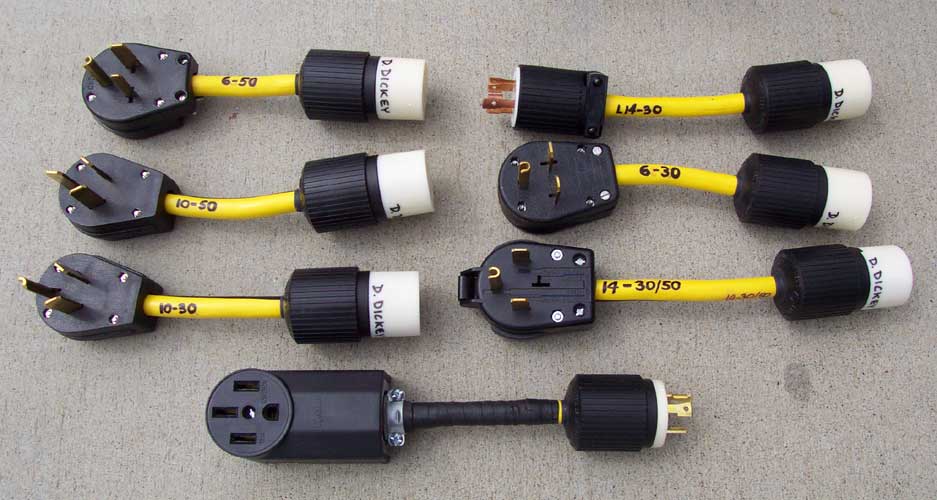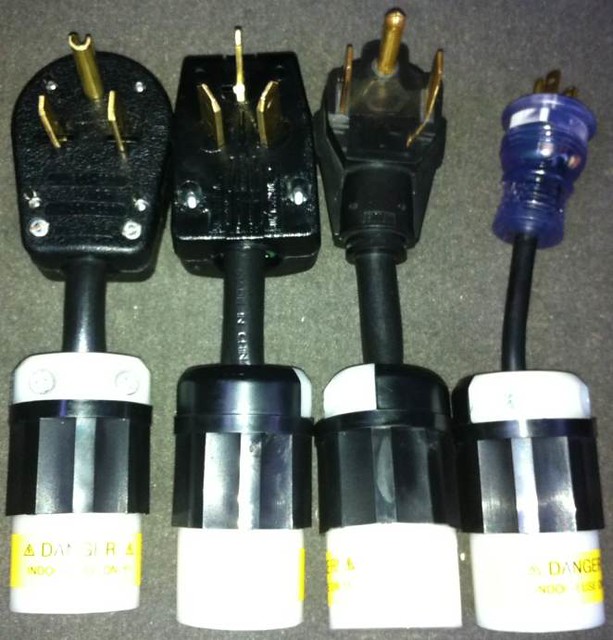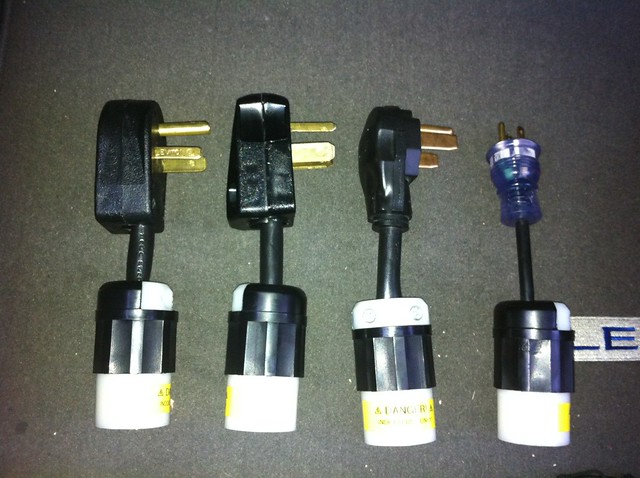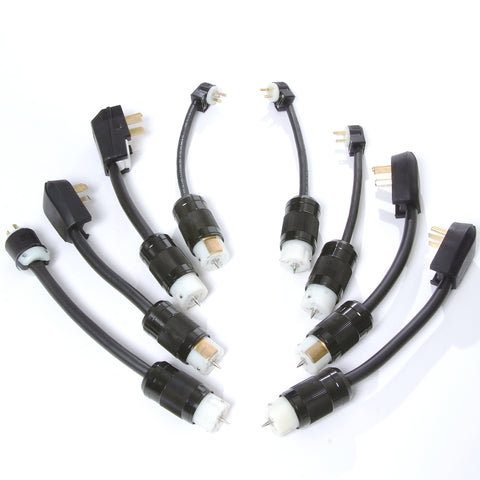garygid
Well-known member
The discussion of making Do-It-Yourself (DIY) adapters for the "Upgraded" Nissan/Panasonic L1 EVSE should be moved/continue here.
The other "adapter" thread should be for discussion of the adapters that are being built FOR you, and sold TO you. These guys are doing a great service and we are cluttering their topic with how to NOT use them.
Many, even most, do not have the time, desire, experience, or skills to locate sources, evaluate products, purchase pieces, and then MAKE their own "adapters" from wire, plugs, and sockets.
But, for those who want to risk poking, slicing, & stabbing their fingers and other body parts, we can provide some help here.
Terminology:
"P" = Plug, a connector with metal contacts (pins) sticking out, the "male" connector.
"R" = Receptacle, the mate to the Plug, with holes matching the plug's pins, the "female" connector. When mounted on a wall/surface, often called a "socket", incorrectly called a "plug".
"C" = connector, sometimes used to refer to an "R" device, when on the end of a cord.
Wire: Metal, solid or stranded, usually copper (avoid aluminum/aluminium), might be shielded or bare.
Cable (sometimes Cord): A group of shielded wires enclosed by an external "tube" of insulation.
"L" = Locking, usually a twist-to-lock together type plug and socket.
OK, that gets us started.
Sources, local hardware, electrical supply, on-line:
1. Home Depot, Lowes, etc.
Poor, Good, Better, Best products, usually with prices to match, but anything can be offered for sale at a higher price.
Assembly Techniques:
Stripping the Cable
Stripping the wires
Connecting wires to pins
Routing wires inside Plugs, etc.
Strain Relief, or "clamping" the cable
Increasing Weather-Resistance
Physical and Electrical Safety issues
First aid Techniques
Cheers, Gary
The other "adapter" thread should be for discussion of the adapters that are being built FOR you, and sold TO you. These guys are doing a great service and we are cluttering their topic with how to NOT use them.
Many, even most, do not have the time, desire, experience, or skills to locate sources, evaluate products, purchase pieces, and then MAKE their own "adapters" from wire, plugs, and sockets.
But, for those who want to risk poking, slicing, & stabbing their fingers and other body parts, we can provide some help here.
Terminology:
"P" = Plug, a connector with metal contacts (pins) sticking out, the "male" connector.
"R" = Receptacle, the mate to the Plug, with holes matching the plug's pins, the "female" connector. When mounted on a wall/surface, often called a "socket", incorrectly called a "plug".
"C" = connector, sometimes used to refer to an "R" device, when on the end of a cord.
Wire: Metal, solid or stranded, usually copper (avoid aluminum/aluminium), might be shielded or bare.
Cable (sometimes Cord): A group of shielded wires enclosed by an external "tube" of insulation.
"L" = Locking, usually a twist-to-lock together type plug and socket.
OK, that gets us started.
Sources, local hardware, electrical supply, on-line:
1. Home Depot, Lowes, etc.
Poor, Good, Better, Best products, usually with prices to match, but anything can be offered for sale at a higher price.
Assembly Techniques:
Stripping the Cable
Stripping the wires
Connecting wires to pins
Routing wires inside Plugs, etc.
Strain Relief, or "clamping" the cable
Increasing Weather-Resistance
Physical and Electrical Safety issues
First aid Techniques
Cheers, Gary








